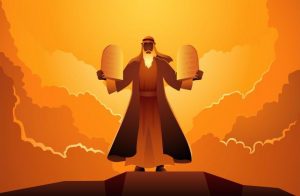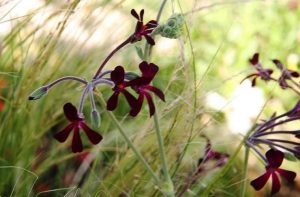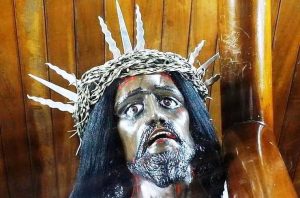The African world view and beliefs which encourage the sacredness of the universe and of all created beings should be promoted worldwide to preserve the environment.
African religious heritage, linking Africa with nature and God, should be the starting point in preserving the environment. Africans view themselves as part of the environment. Man exists only in this cosmic interweaving. This web of relations is what makes Africans view the earth as their mother and themselves as her children.
This means that, though God, humans, and nature are distinct, they are interrelated and interdependent. Therefore, plants, animals, and other non-living beings are part of nature, which is the product of God’s creation. They deserve respect as much as human beings who are also part of nature. Relations between people and nature are rooted in God – the creator of all. Plants, animals, minerals, and other inanimate beings form an interdependent whole. This is why Africans regard themselves as closely related to the entire cosmos.
Everything in the universe exists in relation to human beings. In this African world view, other beings were made to strengthen humans. All beings lived in peaceful and harmonious connection, thus strengthening humanity. In other words, the world in traditional African societies, was as a gift to benefit humanity. One sees this in the way many African ethnic groups define a person. For instance, the Akamba in Kenya will define Mundu (a person) according to his relation to nature and to others. People co-exist peacefully with other people, other living beings and inanimate beings within their environment. Good acts are those that preserve harmony and peace in the community’s web of relationships.
In traditional Chagga society in Tanzania, when the weather was good people were in peace and harmony with nature, their ancestors, and God. If there was drought, famine, and floods then the Chagga believed they didn’t have a proper and good relationship with nature, their ancestors, God, and others. They believed people’s evil deeds towards nature upset the natural order God had established during creation with humans at the centre. To abide God’s order every individual in traditional African society had to strive to live an upright life. Everyone tried to keep harmony in the community and to take care of the environment.
Traditional African societies had many shrines associated with big trees like fig trees and baobabs. These, with the surrounding vegetation, were sacred places for worship. Traditional Agikũyũ regarded trees, shrubs, grass, and forests as valuable gifts from God. They especially respected big trees (figs) as a place to meet God. They performed sacrifices and made offerings under the mũgumo tree. Still today, you can’t cut a mũgumo tree because it is sacred.
The Chagga are not very different from the Agikũyũ with respect to sacred trees. They associated extraordinary trees with God. They held much respect for these trees and no one could cut them or collect firewood from their dry branches. Under these trees, people worshipped and offered sacrifices. They called these places Kiungu or Kitasioni (places for offering sacrifices). They consider these trees and the shrubs around them sacred. This attitude preserved trees, vegetation, and ecology. Africans didn’t give importance to trees and herbs only for spiritual purposes, but also because trees, herbs, and plants in general were useful for human life. Apart from being symbols of God’s presence among people, trees were medicine for men and animals. Trees, leaves, roots, and grasses provided herbal medicines to humans and to wild and domestic animals.
The Maasai, living in Kenya and Tanzania, respect trees and shrubs because they provide shade for various social gatherings. The main social gatherings in Maasai communities take place under trees. The Maasai also have great respect and love for grass as a blessing of God for their animals, which they consider a valuable wealth. Apart from providing shade for various social gatherings, the Maasai also use trees for purification ceremonies and rituals. The community protects trees used for this purpose. The wood, bark, and leaves of trees can be used in naipok, purification ceremonies, to prevent bad luck. Trees and shrubs are good and their special ritual value is closely associated with certain notions of Maasai cosmology.
Traditional African religions involve many beliefs and practices, traditions and customs, which are the ways people express their religion. Religious values beneath these beliefs, customs, and traditions helped people maintain a good relationship with their environment.
For instance, the Sukuma in Tanzania believe that some wild areas have a spiritual force, so nobody can hunt, cultivate, or cut trees there. They have a cult for the spirits of the land who protect the soil, and for keepers of nature where traditional plants and animals live undisturbed. This cult involves offering sacrifices to appease the spirits of the land. Goats and cows are slaughtered. This ensures human activities don’t disturb the environment.
In Malawi, the Achewa people consider the forest to be sacred. They have a hut where the chief offers sacrifice, prays for rain, fertility, and new life for the whole community. Forests are places of abundant life, to be revered and honoured. Nobody disturbs them because it means disturbing life. Sacrifices are offered to divinities, ancestors are venerated, and traditional Africans worship God to preserve an ecological balance. Through traditional community rituals – ceremonies, sacrifices, and prayers – people establish a good relationship with their environment. African beliefs and taboos help preserve the environment because people stop using resources carelessly. Respect for sacred places helps.
(Bakanja Mkenda)






